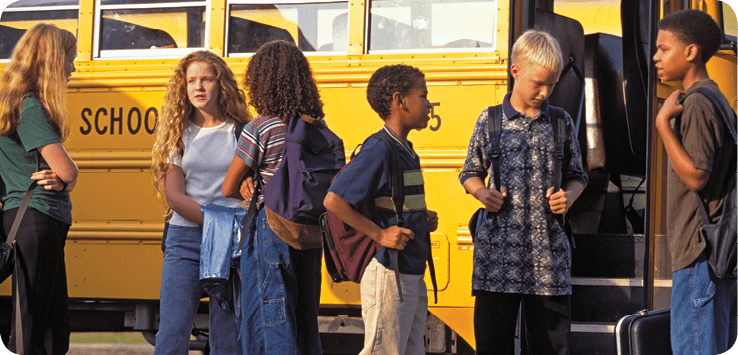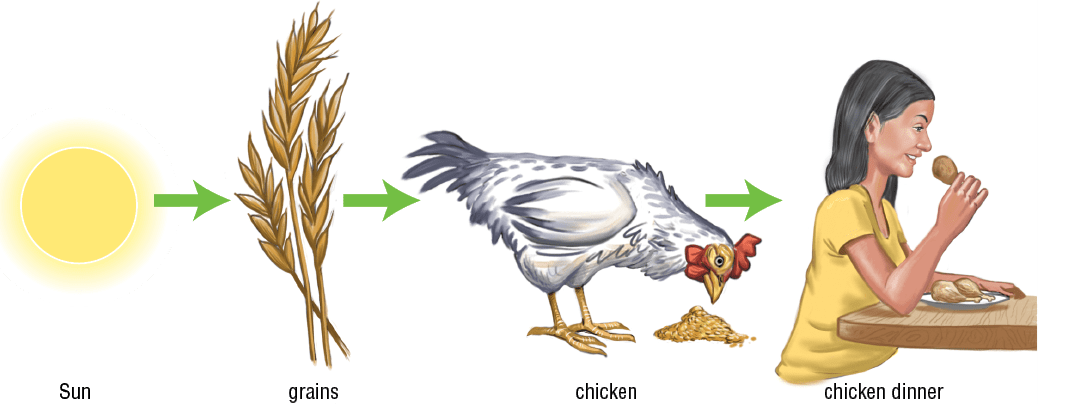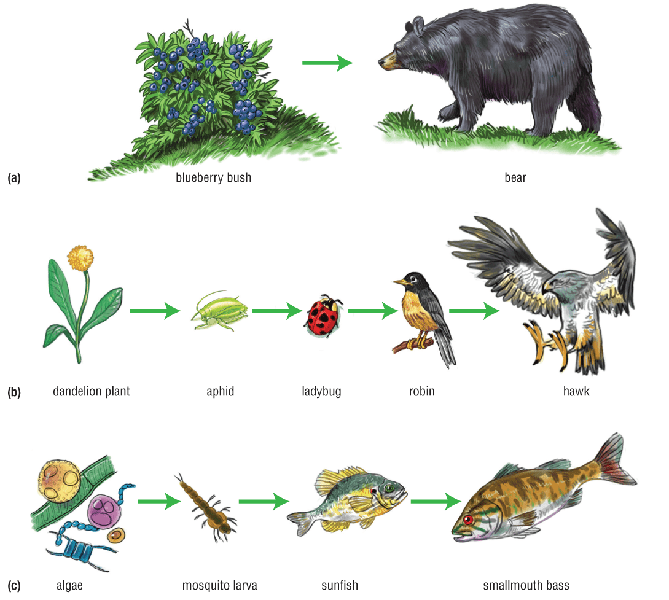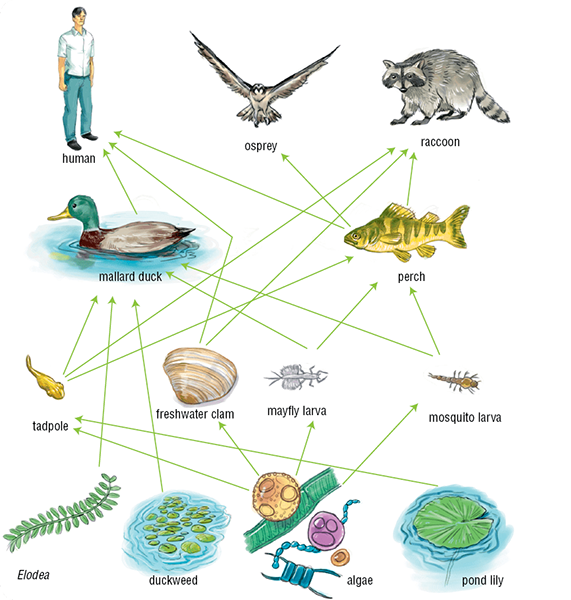5.2: Food Chains and Food Webs
Science Background
Ecologist Versus Environmentalist
The media tend to present ecology and environmentalism as synonyms. This is not an accurate portrayal. Ecology is the science that deals with relationships between organisms and between organisms and the abiotic environment. Environmentalism is a philosophy (or group of philosophies) that tends toward a particular agenda, whether it be economic, political, or spiritual. True ecological studies do not have an “agenda” as such, apart from the pursuit of understanding about the natural world. Many environmentalists do base their outlook on ecological and other scientific principles, and most ecologists probably consider themselves environmentalists. But the two roles do not necessarily go together.
Similarly, ecology and environmental science are often equated in the popular perception, but these branches of science differ in their focus. Ecology is broader than environmental science, dealing with all relationships between living things and the non-living environment. Environmental science looks more specifically at interactions between humans and other living things and between humans and the non-living environment.
POSSIBLE MISCONCEPTIONS
Identify
Students may think that any group of organisms could be grouped together in a food chain or food web.Clarify
Food chains and food webs describe how energy and nutrients are passed through a particular ecosystem. A food chain or food web cannot have any set of producers, herbivores, carnivores, and decomposers. For example, while an herbivore eats plants, no one herbivore is adapted to feed on all possible plants. Organisms from different ecosystems do not belong together in a food chain or food web.Ask What They Think Now
At the end of the lesson, ask, Can you make a food web with the following organisms: tiger, human, zebra, penguin, algae, bamboo, panda? Why or why not? (No. Although the list contains a mix of producers, herbivores, and carnivores, these organisms belong in different ecosystems, so they do not have natural feeding relationships.)
How did you get to school today? Did you walk, ride your bike, or take a bus (Figure 1)? Did you walk from class to class during the day? Did you write in your notebook today? All of these activities require energy. We obtain energy from the food we eat. But how did energy get into our food in the first place?

Linking to Literacy
Before Reading: Using Text Features to Support Predicting
Before reading, take a few moments to scan the content. Look at the following text features: title, subtitles, illustrations, photos, highlighted text, and captions. What information can you learn from scanning these features before you read? Make a prediction about the kind of information you will learn about as you read this section.
The path energy takes in an ecosystem begins with the Sun. All plants grow by absorbing energy from the Sun and turning it into foods such as sugars and starches. The energy of the Sun is stored in the plant. When an animal such as a chicken eats grain (seeds of various grass plants), the energy stored in the plant is transferred from the starches in the grain to the chicken (Figure 2). When you eat chicken for dinner, some of the energy is passed on to you. So, energy starts from the Sun and passes from producers to consumers.

Food Chains
A food chain is a model that shows how energy and nutrients flow from one organism to another in an ecosystem. Arrows show the direction of the energy and nutrient flow. The number of “links” in a food chain can vary, but the food chain always starts with a producer and ends with a consumer. A food chain can have just two components, a producer and a consumer (Figure 3(a)). Other food chains are more complicated (Figures 3(b) and (c)). A producer may be consumed by a herbivore (primary consumer), which is then eaten by a carnivore (secondary consumer). In some cases, another carnivore (tertiary consumer) eats the first carnivore.


